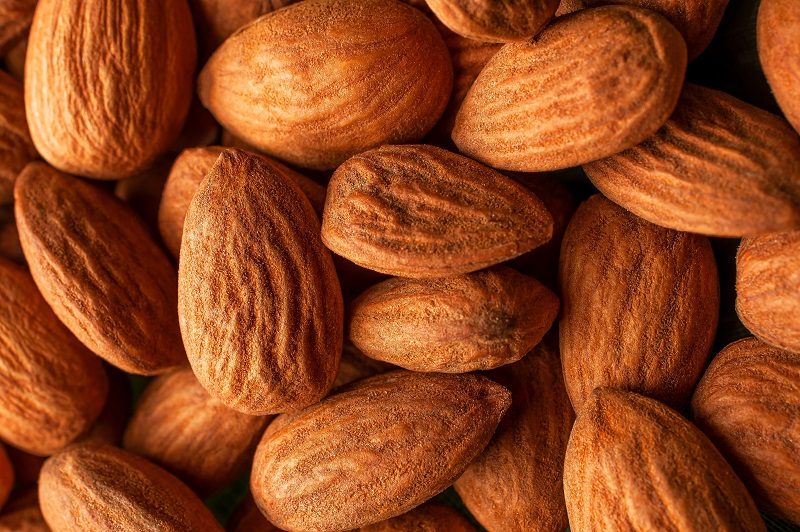New Chemical Protects Plants From Drought

Growers in the United States witnessed record-breaking extremes in temperature and drought during the last two summers, causing worldwide increases in the costs of food, feed and fiber. Indeed, many climate scientists caution that extreme weather events resulting from climate change is the new normal for growers in North America and elsewhere, requiring novel agricultural strategies to prevent crop losses.
Now a research team led by Sean Cutler, a plant cell biologist at the University of California, Riverside (UCR), has found a new drought-protecting chemical that shows high potential for becoming a powerful tool for crop protection in the new world of extreme weather.
Named “quinabactin” by the researchers, the chemical mimics a naturally occurring stress hormone in plants that helps the plants cope with drought conditions. Study results appear online this week in the Proceedings of the National Academy of Sciences.
All land plants have intricate water sensing and drought response systems that are tuned to maximize their fitness in the environments they live in. For example, plants in environments with low water grow slowly so that they do not consume more water than is available.
“But since farmers have always desired fast-growing varieties, their most valued strains did not always originate from drought-tolerant progenitors,” explained Cutler, an associate professor of plant cell biology. “As a result, we have crops today that perform very well in years of plentiful water but poorly in years with little water. This dilemma has spawned an active hunt for both new drought-tolerant crops and chemicals that farmers might use for improving crop yield under adverse conditions.”
Working on Arabidopsis, a model plant used widely in plant biology labs, Cutler and his colleagues focused their efforts on tinkering with one of the plant endogenous systems involved in drought responses. Plant leaves are lined with tiny pores, called stomata, which dynamically open and close to control the amount of water lost to the environment by evaporation. So that the plants can acquire carbon dioxide from the atmosphere, the pores need to be open some of the time, resulting in some loss of water.
During drought the stomata close firmly to limit water loss. Behind the scenes, a small hormone called abscisic acid (ABA) orchestrates the opening and closing of the pores. Cells throughout the plant produce increasing amounts of ABA as water levels decrease. ABA then moves throughout the plant to signal the stressful conditions and close the stomata. Inside plant cells, ABA does its job by turning on a special class of proteins called receptors. The discovery in 2009 of ABA receptors by the same team behind the current breakthrough was heralded by Science magazine as one of the top breakthroughs of 2009 because of its relevance to the drought problem.
“If you can control the receptors the way ABA does, then you have a way to control water loss and drought-tolerance,” Cutler said. “It has been known for many years that simply spraying ABA on plants improves their water use and stress tolerance, but ABA itself is much too expensive for practical use in the field by farmers.”
To address this problem, Cutler and his team searched through many thousands of molecules to identify inexpensive synthetic chemicals that could activate the receptors by mimicking ABA. The team found and named quinabactin, a molecule they show is almost indistinguishable from ABA in its effects, but much simpler chemically and therefore easier to make than ABA. By studying how the new molecule activates the ABA receptors that are involved in drought tolerance, the team also has learned more about the underlying control logic of the stress response system and provided new information that can be used for others interested in developing similar molecules.
“This is a competitive arena that includes agrichemical giants who are busily working to bring similar drought-protecting molecules to market, so this is a landmark discovery because quinabactin is the first-in-class synthetic molecule of its kind,” Cutler said.
The work reported this week is the first in a multistep process of bringing a new agricultural product to market. Given the complexity and costs of such a process, the UCR Office of Technology Commercialization (OTC) is working with an agricultural leader, Syngenta Biotechnology, Inc., to develop the technology. Joyce Patrona, a licensing officer in OTC, is coordinating UCR’s licensing efforts for quinabactin.
“It has become very apparent to industry engaged in this area of technology of the robustness of Dr. Cutler’s research,” she said. “This is a credit to Dr. Cutler and his team as well as to UCR for its commitment to bring innovative research to the marketplace.”
Cutler’s collaborators on the research project are Brian Volkman and Francis Peterson at the Medical College of Wisconsin, who helped unravel the mechanism by which quinabactin mimics ABA by determining the atomic structure of the new molecule bound to one of its cellular receptors. Others who worked with them are Masanori Okamoto (first author of the research paper), Andrew Defries and Sang-Youl Park at UCR; and Akira Endo and Eiji Nambara at the University of Toronto, Canada.
The research was supported by grants from the National Science Foundation, Syngenta Biotechnology, Inc., and the Japanese Society for the Promotion of Science.









